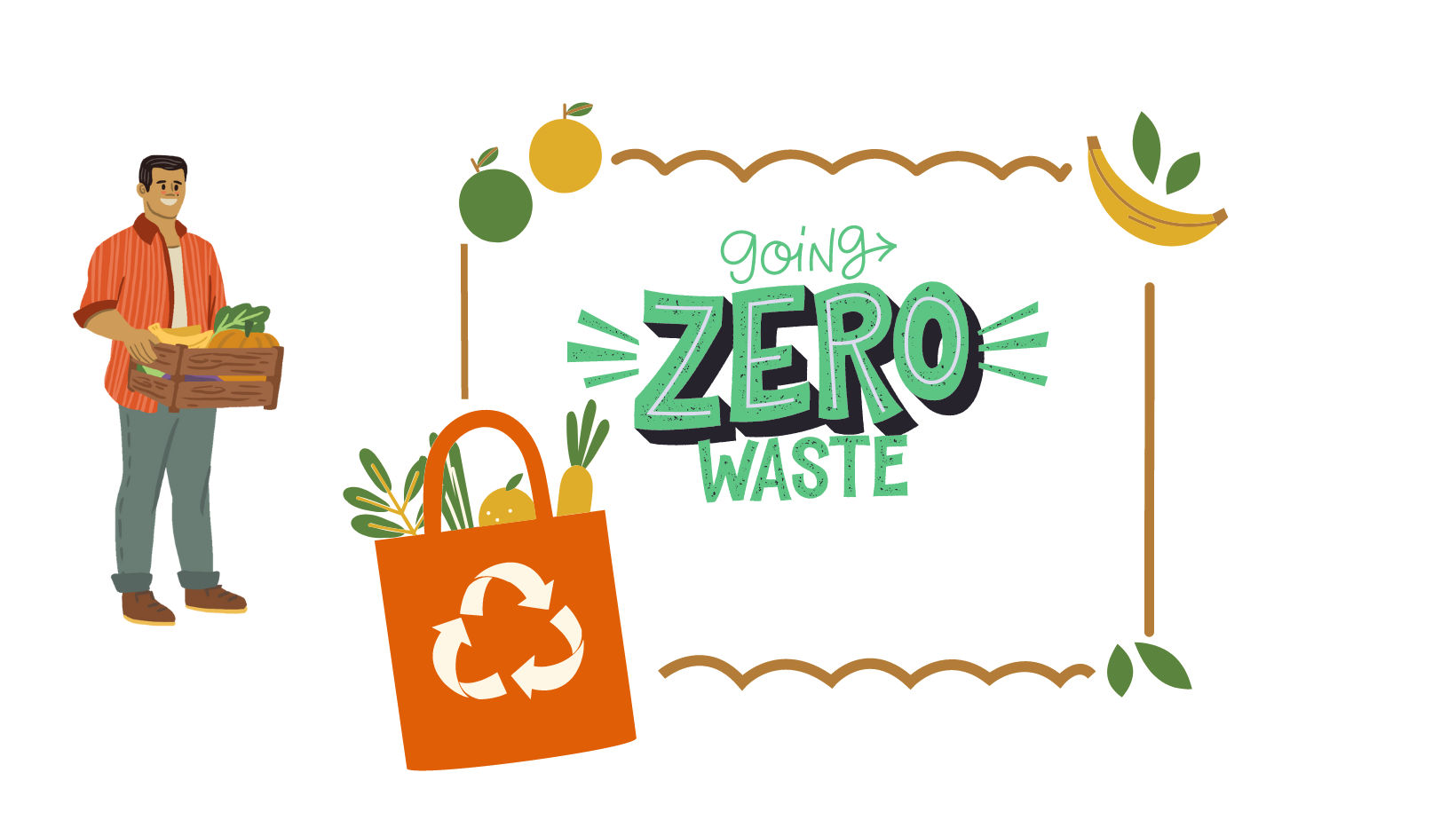Current global environmental issues such as climate change, poor waste management, deforestation, soil degradation, and unsustainable natural resource use warrant a shift in how humans conduct business. The Intergovernmental Panel on Climate Change (IPCC) 2022 report sounded code red for humanity, citing that the window to take climate action is closing fast. Over 3.3 billion people are vulnerable to the adverse effects of climate change.
Embracing green economies is a great climate adaptation and resilience strategy. A green economy is guided by environmentalist principles, considering the society, environment, and natural capital. A green economy is low-carbon, resource-efficient, and socially inclusive. It's a shift from the brown economy, where activities are mainly environmentally destructive.
In support, the Government of Kenya (GoK) is working to develop an effective Green Fiscal Incentives Policy Framework to steer Kenya's economy towards green growth.
Why Kenya Needs the National Green Fiscal Incentives Framework
Mechanisms to be Used to Incentivize for Green Growth in Kenya
Existing Fiscal Initiatives in Kenya to Promote a Green Economy
Current Policies That Support Green Growth in Kenya
The Constitution of Kenya (2010)
National Climate Change Response Strategy (NCCRS) 2010
Kenya National Environmental Policy, 2013
Kenya Vision 2030 and its Medium Term Plans (MTPs) 2013-2017
Environmental Management and Co-ordination Act (EMCA), 1999 (Amendment Act, 2015)
Climate Change Act, 2016 (No. 11 of 2016)
Green Economy Strategy and Implementation Plan 2016-2030
Miscellaneous Fees and Levies Act 2016
Ban on Plastic Packaging Bags, 2017
National Climate Change Action Plan (NCCAP) 2018-2022
National Policy on Climate Finance, 2018
Ban on Single-Use Plastics in All Protected Areas, 2020
Nationally Determined Contribution (NDC)
Sustainable Waste Management Act, 2022
Major Issues Per Sector as Identified in the National Green Fiscal Incentives Framework
Other Proposed Actions to Promote a Green Economy in Kenya
Our Proposals for Consideration to Support the National Green Fiscal Incentives Framework
Why Kenya Needs the National Green Fiscal Incentives Framework
The policy framework is beneficial in several ways:
- A low-carbon and climate-resilient development pathway helps realize Sustainable Development Goals (SDGs).
- Green development has proven to generate additional revenue. Kenya's GDP is expected to be 12% higher by 2030 if it adopts green growth.
- To entice the private sector to invest in climate-friendly production mechanisms.
- Kenyans will enjoy a better and cleaner environment, as enshrined in Chapter 4, article 42 of the constitution of Kenya, which discusses the right to a clean and healthy environment.
- Kenya will be one step closer to achieving the goals of One Health. A better environment leads to better human and animal health, improving economies.
- Robust natural capital. Natural capital is the stock of natural resources such as trees, water, all living organisms, soil, and air. These make human life possible.
- Steer a shift from a linear to a circular economy. In a linear economy, we take-make- waste. In a circular economy, waste is a resource, making a continuous and closed production loop.
- Build Kenya's resilience to climate and related shocks.
- Kenya is top 20% of countries most vulnerable to climate change. We need climate-resilient and adaptation strategies like the proposed green fiscal incentives policy framework.
- There's a global effort to shift to a low-emissions development pathway, made possible by several Multilateral Environmental Agreements (MEAs) such as the UNFCCC Framework Convention on Climate Change (1992), Kyoto Protocol (1997), Paris Agreement (2015), and Vienna Convention for the Protection of the Ozone Layer (1985). For example, as one of the 196 parties under the Paris Agreement, Kenya must pursue efforts to limit the average global temperature increase to below 2°C above pre-industrial levels.
- Aid Kenya to achieve her goal of reducing Green House Gas (GHG) emissions by 32% by 2030, as highlighted in the Nationally Determined Contribution (NDC). This is despite contributing approximately 0.1% of global emissions.
- Increase interest in investments in all environmental sectors. An in-depth look at the Landscape of Climate Finance in Kenya revealed that 79% of climate finance in Kenya is directed towards climate mitigation initiatives, as opposed to adaptation initiatives, yet the NDC is adaptation-focused. The renewable energy sector receives the most interest, leaving out areas such as water management, forestry, agriculture, transport, and land use. The figure below shows the gaps.

Sustainability of the Policy
The national green fiscal incentives framework proposes a series of actions to help Kenya navigate a greener economy. The government will ensure the policy's sustainability and keep up with emerging issues by doing the following.
- Developing a continuous program for monitoring and evaluation.
- Reviewing the policy within 5 years to assess the effectiveness and relevance to current and expected issues.
Mechanisms to be Used to Incentivize for Green Growth in Kenya
Kenya aims to use several mechanisms to achieve a robust green fiscal incentives framework to drive green investments. They include:
- Tax policies. For example, rebates, congestion tax, and disincentives.
- Subsidies. For example, interest rate subsidies.
- Expenditure programs. For example, the government directly spends to plant trees.
- Integrating fiscal components to regulatory instruments. For example, concessional loans
- Green and blue bonds
- Development of a Green Investment Bank (GIB) and Green Investment Register (GIR)
Existing Fiscal Initiatives in Kenya to Promote a Green Economy
A few green fiscal initiatives exist in Kenya, including.
- Financing Locally Led Climate Action (FLLoCA) Program. With the support of the World Bank, Swedish and Danish governments, Kenya's government disburses funds to county and community levels to fund locally-led climate adaptation and resilience efforts and initiatives.
- GoK disbursed Ksh 76 billion to climate-related development initiatives in the financial year 2017/18. 45% of this amount (Ksh.34 billion) was from domestic public resources. The rest was from international sources.
- The Kenya County Climate Change Fund was established via Climate Change Act 2016. The fund has benefitted counties including Isiolo, Garissa, Wajir, Makueni, and Kitui.
- The banking sector has embraced the need for green growth and helped with funding. For example, Kenya Commercial Bank (KCB) Group issued loans over Ksh. 336 million between 2020 and 2021 to fund ecofriendly projects. The bank aims to allocate a quarter of its loan portfolio to green finance by 2025. The bank was awarded the Best Bank in Sustainable Finance in 2022.
- Initiatives like The Green Bond Programme The Nairobi Securities Exchange (NSE) issued the first green bond market in East and Central Africa in 2020.
Current Policies That Support Green Growth in Kenya
Kenya has a healthy and vigorous legal and policy framework that supports green growth. The draft National Green Fiscal Incentives Policy Framework works to reinforce existing efforts. We'll sample a few current policies that have helped steer the country and place her as a global leader in environmental management.
The Constitution of Kenya, 2010
Article 42 in chapter 4 of the Kenyan Constitution states that all Kenyans have a right to a clean and healthy environment.
Part two of chapter 5 of Kenya's constitution further defines these environmental rights. Article 69 stipulates obligations concerning the environment, such as sustainable exploitation of natural resources, conservation, public participation in environmental management, protection of genetic resources and biodiversity, and elimination of processes and activities that'll harm the environment.
Article 70 discusses the enforcement of environmental rights, article 71 covers agreements relating to natural resources, and article 72 bestows the Kenyan parliament the power to enact legislation to realize these constitutional provisions.
National Climate Change Response Strategy (NCCRS) 2010
The National Climate Change Response Strategy (NCCRS) is the child of stakeholder consultations detailing how Kenyans want to tackle climate change issues. Resource mobilization to handle climate change adaptation in Kenya is detailed in chapter 9 of the document.
Partnerships with regional funding agencies, such as the African Development Bank (AfDB), and devolved funding sources, like the Local Authority Transfer Fund (LATF) and the Constituency Development Fund (CDF), are mentioned as sources of funds.
Kenya National Environmental Policy, 2013
The Kenya National Environmental Policy 2013 provides a framework for cohesive, sustainable management of the nation's natural resources and environment. The policy proposes fiscal incentives for waste minimization, recovery, reuse, and recycling to promote a circular economy.
It also proposes incentives for eco-tourism, wildlife conservation initiatives, ecofriendly production technologies, water and sanitation technologies development, waste management infrastructure, and establishments adopting ecofriendly technologies.
Kenya Vision 2030 and its Medium Term Plans (MTPs) 2013-2017
Kenya's Vision 2030's Second Medium Term Plan (MTP) identifies climate change as an emerging issue that threatens Kenya's economic growth.
The MTP identifies implementation of the National Climate Change Action Plan (NCCAP), formulation of a climate change bill and policy, and establishment of a national climate change fund, as actions to take. These have been done.
Environmental Management and Co-ordination Act (EMCA), 1999 (Amendment Act, 2015)
The Environmental Management and Co-Ordination Act (EMCA) institutes appropriate legal and institutional mechanisms for managing the environment in Kenya. Section 57 of the Act discusses fiscal incentives concerning the environment.
The Act empowers the Cabinet Secretary for finance to propose government tax, incentives, disincentives, or fees to encourage or promote proper environmental management and avoid environmental degradation.
Climate Change Act, 2016 (No. 11 of 2016)
The Climate Change Act (2016) provides a regulatory framework that provides a mechanism for a low-carbon economy. The Act established the Climate Change Fund, vested in the National Treasury.
The fund provides grants to climate change research and innovation; grants and loans to businesses, academia, industry, and other stakeholders; and provision of technical assistance to county governments.
Green Economy Strategy and Implementation Plan 2016-2030
The Green Economy Strategy and Implementation Plan (GESIP) 2016-2030 is designed to steer Kenya into a low-carbon, resource-efficient, equitable, and inclusive development plan in line with Vision 2030's environmental objectives.
The policy identifies concessional loans and grants, co-financing with banks, and establishing green funds as resource mobilization tools.
Miscellaneous Fees and Levies Act 2016
The Miscellaneous Fees and Levies Act 2016 enforced a 20% export levy on scrap metal. Scrap metal is an essential raw material for making steel. The levy helps contribute to a circular Kenya, making it easier for steel companies to access scrap metal, a waste product.
Ban on Plastic Packaging Bags, 2017
In 2017, Kenya banned using, manufacturing, and importing all plastic bags for use in commercial and household packaging. It's one of the strictest in the world, with a penalty of up to 4 years in prison or a fine of Ksh. 4 million.
National Climate Change Action Plan (NCCAP) 2018-2022
The National Climate Change Action Plan (NCCAP) 2018-2022 charts the path to a low carbon and climate-resilient development by prioritizing climate adaptation.
Climate change adaptation means a change in human behavior and systems, adjusting our way of life to deal with the impacts of climate change. For example, building seawalls to protect against rising sea levels or moving to higher ground, planting crops suitable for the new climatic conditions, and developing effective early warning systems for people at risk of natural disasters.
National Policy on Climate Finance, 2018
The National Policy on Climate Finance 2018 goal is to help mobilize, manage, and track climate change finance by integrating climate financing into public finance management.
The Act incentivizes the private sector to support low-carbon and climate-resilient development. Key actions set to benefit are investments in energy efficiency such as energy-efficient buildings, renewable energy, clean cooking, mass rapid transit system, climate-proofing infrastructure, as well as research and innovation in climate adaptation and mitigation technologies.
Finance Act 2019
The Finance Act 2019 reduced corporation tax (15%) for companies operating plastic recycling plants for the first 5 years of operation.
Ban on Single-Use Plastics in All Protected Areas, 2020
Kenya banned Single-Use Plastics (SUPs) in all her protected areas, including beaches, national parks, conservation areas, and forests. Alternatives to single-use plastics are great conversation starters, helping make changes at personal and business levels.
Nationally Determined Contribution (NDC)
The Paris Agreement uses Nationally Determined Contributions (NDCs) as one of the tools to help countries reduce their national emissions and adapt to climate change. Kenya has developed and updates its NDC every 5 years, submitting the changes to the United Nations Framework Convention on Climate Change (UNFCCC) secretariat.
Sustainable Waste Management Act, 2022
The National Solid Waste Management Strategy 2014 set the stage for the sustainable waste management Act 2022. The strategy aimed to steer Kenya towards 'zero waste,' promoting waste minimization, recovery, reuse, and recycling.
The Sustainable Waste Management Act 2022 champions a circular economy in Kenya. A circular economy is a model of resource consumption and production based on the reuse and regeneration of materials to promote environmentally friendly development. In a circular economy, waste is a resource.
The Sustainable Waste Management Act 2022 provides incentives to promote sustainable waste management. Part 6 of the Act details financial provisions.
It empowers the Cabinet Secretary for Environment, in consultation with the Cabinet Secretary responsible for finance, to introduce incentives for locally produced and imported sustainable waste management and imported air pollution control equipment and materials, as well as expansion of private investment in material recovery and recycling.
Major Issues Per Sector as Identified in the National Green Fiscal Incentives Framework
For over a decade, Kenya has evidently worked towards improving her climate change response strategy and climate finance options. The draft National Green Fiscal Incentives Policy Framework further refines the process by identifying these current major issues, current policies, and proposed fiscal incentives and policies as outlined in the images below.






Other Proposed Actions to Promote a Green Economy in Kenya
- Development of a green investment bank to fund both the public and private sectors to undertake green investments. The bank will use tools such as credit guarantees, debt, equity, risk-reduction facilities, green bonds, blue bonds, resilience, and carbon credit transactions.
- GoK will develop a Green Investment Register (GIR), a database of green investments accessible to investors to support rigorous resource mobilization. The register will include national priority green projects, flagship green projects, and green public-private partnerships (PPPs).
- Green public procurement at the national and county level.
- GoK will financially support research and development for innovation and production of green technologies. Special focus will be on 'battery energy storage, energy optimization technologies, grid infrastructure, light electric train, electric vehicles, tree growing and management, water harvesting schemes, small to medium irrigation systems, green buildings, payment for ecosystem, credit guarantees based on investors nature capital potential, demonstration projects, and field trials, and the expansion of charging infrastructure.'
- Bridge the gap between academia and industry to identify green innovation and technology needs.
- Implement regulatory 'sandboxes' for innovators at the early stage of development to let them test their innovation in an actual market.
- GoK will provide financial and technical support for green innovation and incubation hubs.
- GoK, via the Green Investment Bank, will establish and financially support Green Special Economic Zone in all 47 counties.
- GoK to explore the design and practicability of a carbon tax system in Kenya.
Our Proposals for Consideration to Support the National Green Fiscal Incentives Framework
Here are a few suggestions for consideration to support this policy.
- GoK to develop guidelines on roof types that are safe for roof catchment for water harvesting. Not all roof types are for the said purpose.
- A lucrative Payment for Ecosystem Services (PES) framework to entice the population via an attractive cost-benefit analysis. For example, there's a restorative order to remove and prevent the growth of eucalyptus trees along riverine and wetlands shorelines. This drive was contentious in Kisii County when the County Government banned growing eucalyptus trees. The locals cited the tree's immense economic value with a ready market.

Source: NEMA - Support solarization of energy-intensive industries like health and hospitality.
- Promote and support innovations in the sanitation sector. For example, the Merry Loo by Flexi Biogas could help reduce open defecation issues.
- Develop policies to green the healthcare industry specifically.
- Revert to tax exemption for importation and local manufacture of green products and their parts. For example, wind and solar energy equipment and raw materials for manufacturing clean cooking stoves were VAT exempt. This was reversed via Finance Act 2020.
- Introduce Payment for Hydrological Service Schemes. The Mexico case study shows that this method improved land cover management activities by 50%.
- Support for Labor Intensive Public Works (LIPWs), especially in arid and semi-arid lands, to promote agroforestry, land reclamation, fruit orchards, and similar initiatives.
- Limit the use of agricultural land for housing. There's been a global call about this issue, calling for a ban on converting farmlands to housing schemes. Pakistan and the Philippines are good case studies.
- Incentivize alternative sources of fuel such as bagasse briquettes.
- Incentivize ecotourism practices in the hotel industry. Hotel Verde in South Africa is a good case study on greening the hotel industry.
- Tax incentives for green retrofits in all sectors.
- The new building code in Kenya should seal the gaps needed to address green practices, using recycled materials and environmentally-friendly designs. Support and a close working relationship with the Kenya Green Building Society (KGBS) will help achieve this.
- Incentivize construction materials that support the highest indoor environmental quality standards possible. For example, paints with zero Volatile Organic Compounds (VOCs). VOCs are harmful. Some are carcinogenic.
- Develop guidelines on quality requirements for recycled and reused materials to guarantee infrastructure safety for human use.
* Don't be mean. Be Green*





















